Send ultra-relevant emails using groups (aka email tagging)
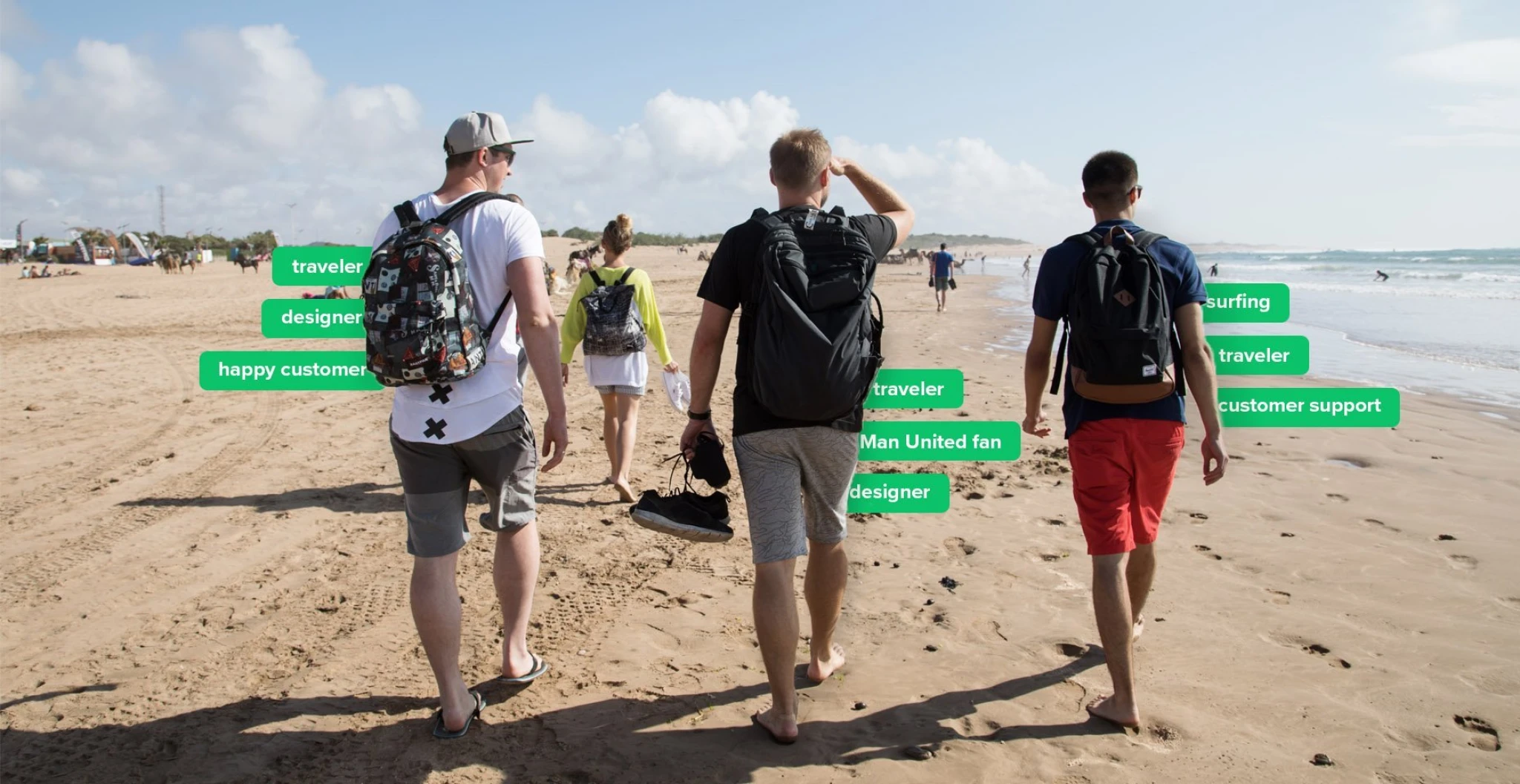
Like you, your subscribers are dynamic and interesting people who don't fit into one particular box. We all have diverse interests, buying behaviors and habits.
But how can you use these individual subscriber characteristics at scale to send more relevant emails?
MailerLite’s Groups (also known as email tags) allow you to add custom tags to your subscribers, giving you the ability to reach people based on specific traits.
Add new members to your groups based on things like their interests, hobbies, job title, or even buying behaviors.
We’ll show you all the cool ways to add tags in MailerLite so you can start benefiting from this targeting superpower.
MailerLite groups are the same as email marketing tags
For those of you marketers who have previously used other email marketing platforms, you may be familiar with email tagging. Well, good news! MailerLite groups serve the exact same purpose—categorizing your subscribers in order to send relevant, personalized content to selected contacts.

You can create a group and use email tags to manually assign that group to different subscribers. Or, you can assign groups automatically based on subscriber behaviors, such as when they fill out a form or make a purchase.
Imagine you manage a newsletter covering sports. During the subscriber signup, you can ask people to choose the sports that they like. Using email tags, subscribers will instantly be added to a specific group based on their choice. Now, instead of sending a bulk email to your full list that includes all sports, you can send a targeted group email to each group based on the sport your subscribers are most interested in.
MailerLite makes it easy to create and assign different email tags.
You have the flexibility to organize your subscribers in almost any way you need to deliver the most relevant email marketing campaigns possible.
Here’s our fun-email-loving colleague, Marcin, to give you step-by-step instructions for setting up groups.
The difference between groups and segments
While groups and segmentation are both ways to break up your subscriber list into smaller sections, each serves a different purpose.
Segmentation in MailerLite is dynamic. It is dictated by a ‘rule’ that you can create with a filter. Subscribers who comply with that rule are automatically included in the segment. If a subscriber no longer meets the conditions of your rule, or set of rules, they will no longer be included in that segment.
Let’s say you want to create a segment that only includes subscribers that signed up in the last 30 days. To do this, you would use the filters: Sign up date > Is in the last > 30 days.
When the subscriber has been a member of your email list for more than 30 days, They’ll automatically be removed from the segment because they no longer comply with the 30-day rule.
Subscribers are continually added or removed from your segment automatically based on the rules you set.
Groups, on the other hand, are not based on a rule and you can assign them to any subscriber across segments.
Imagine you have a few different lead magnets offering various freebies related to separate topics. By using tags, you can send targeted group emails to selected contacts based on the free content they were interested in.
You add and remove email tags manually, or set up an automation to move subscribers to different groups.
Say you have 5 different segments based on geography, but within all those segments are individuals who buy Xbox video games. By using groups, you can send those people emails about Xbox without the need to set up completely new segments.
Group examples to get you started
The main question that many people ask is: what groups should I create?
Everyone’s business and audience is different, and your contact list is totally unique to you. Which is why we let all users completely customize their email marketing tags.
That said, there are some standard practices, depending on your email marketing goals, that we can share to get you started. Here are a few examples of email tagging.
Newsletter opens
Newsletter clicks (engagement)
Clicks on product notifications
Clicks on special offers
Shares newsletter
Clicks on social media icons
Registers for a webinars
Signup source (from social media, website, etc.)
Downloads content
Attended event (an option if emails were collected offline)
Happy customers or disappointed customers (NPS surveys)
Purchases specific product types
Prefers a product category
Uses coupons
Likes promo deals
Ships overnight
While the above groups are more standard, you can get even more personal with tagging and create groups like:
Job titles (Designer, Developer, Writer, etc.)
Interests (Traveler, surfer, watches Stranger Things, etc.)
Partner / vendor types
As you get to know your subscribers better, you can create ultra-personalized groups.
However, don’t stress about collecting a lot of data right away. It can be overwhelming and even counterproductive to have too many different email tags. Start small and as you create more groups, continually update or review old ones (and keep your marketing team sane)!
So you've created your groups, what next?
Once you have decided what kind of email groups are best going to help you meet your email marketing goals, you can add tags to your subscribers so they become members of those groups. There are a bunch of ways you can do this in MailerLite.
1. Select a subscriber group on import
When you import your pre-existing email contact list to MailerLite, you can select a group(s) to add those new subscribers to on the Import settings page. Simply enter the name of the group you wish to import these subscribers into and the different tags will appear in the Add to group field.

2. Use link triggers
A link trigger is a link that kick-starts an automation workflow. You can set links that you have placed in your newsletters as the link trigger for your automations. That way, when a subscriber clicks on the link, MailerLite can automatically copy them to a new or existing interest group.
To achieve this, your automation will contain an Action step that allows adding, moving and copying subscribers to groups.
For example, say you have 3 groups based on different industry trends and you want your subscribers to choose which group they’d like to be added to. First, you add 3 links to your newsletter: Real estate trends, Restaurant trends and Retail trends.
Subscribers can then click on the link they’re interested in receiving newsletters about. The link click will trigger the automation that assigns the new tags to your subscribers, adding them to the group that coincides with the link they clicked. From that moment on, that reader is a member of a targeted interest group.
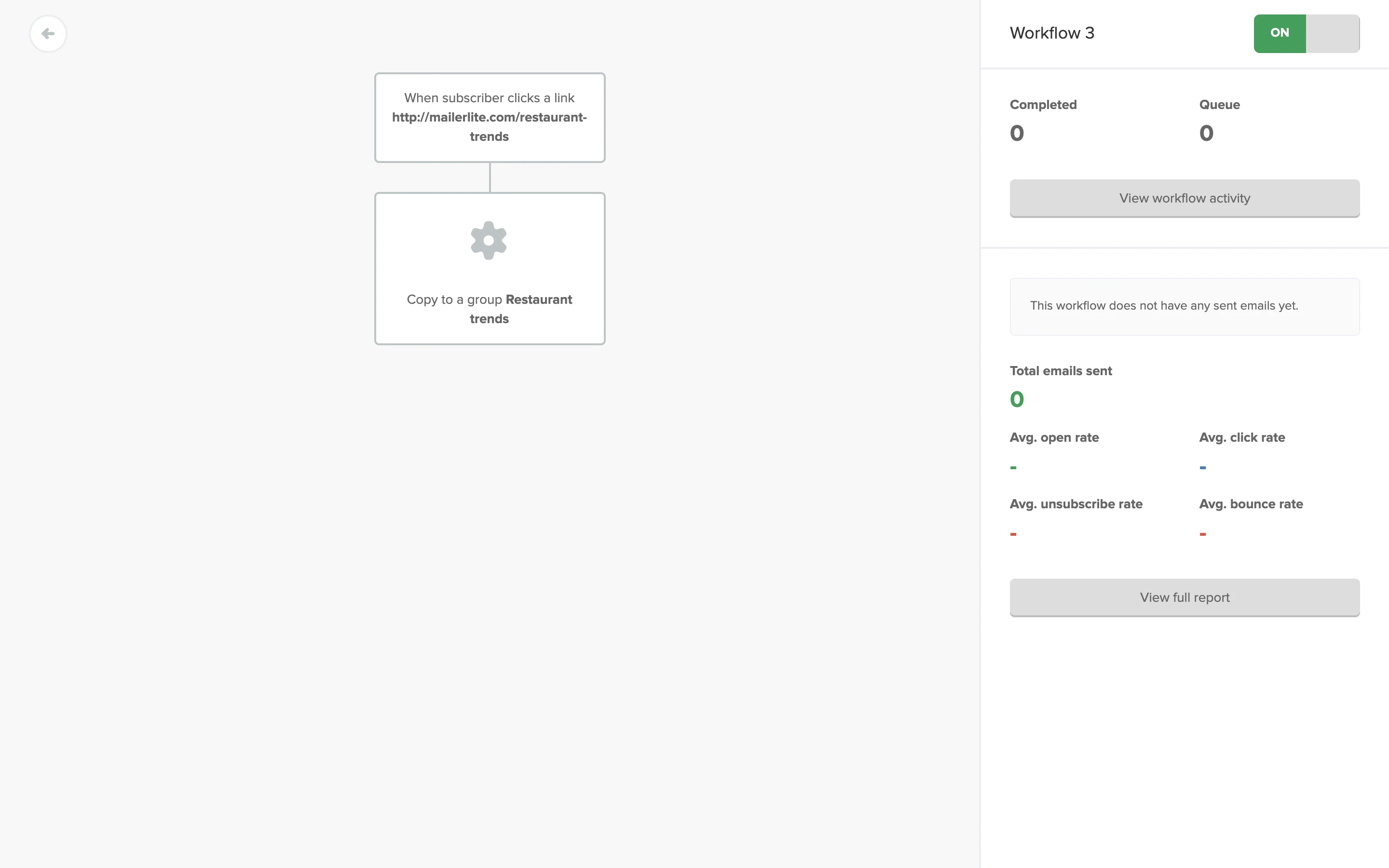
You can also assign email tags to subscribers that don’t click on any of the links. If people aren’t engaging with your newsletters, you can tell MailerLite to automatically assign a new email tag to those subscribers so that you can send a follow up email campaign to them later.
3. Let subscribers self-select email tags using forms
Getting new subscribers can be tough. One strategy to encourage new people to sign up is to give them the power to opt-in exclusively for content they wish to receive.
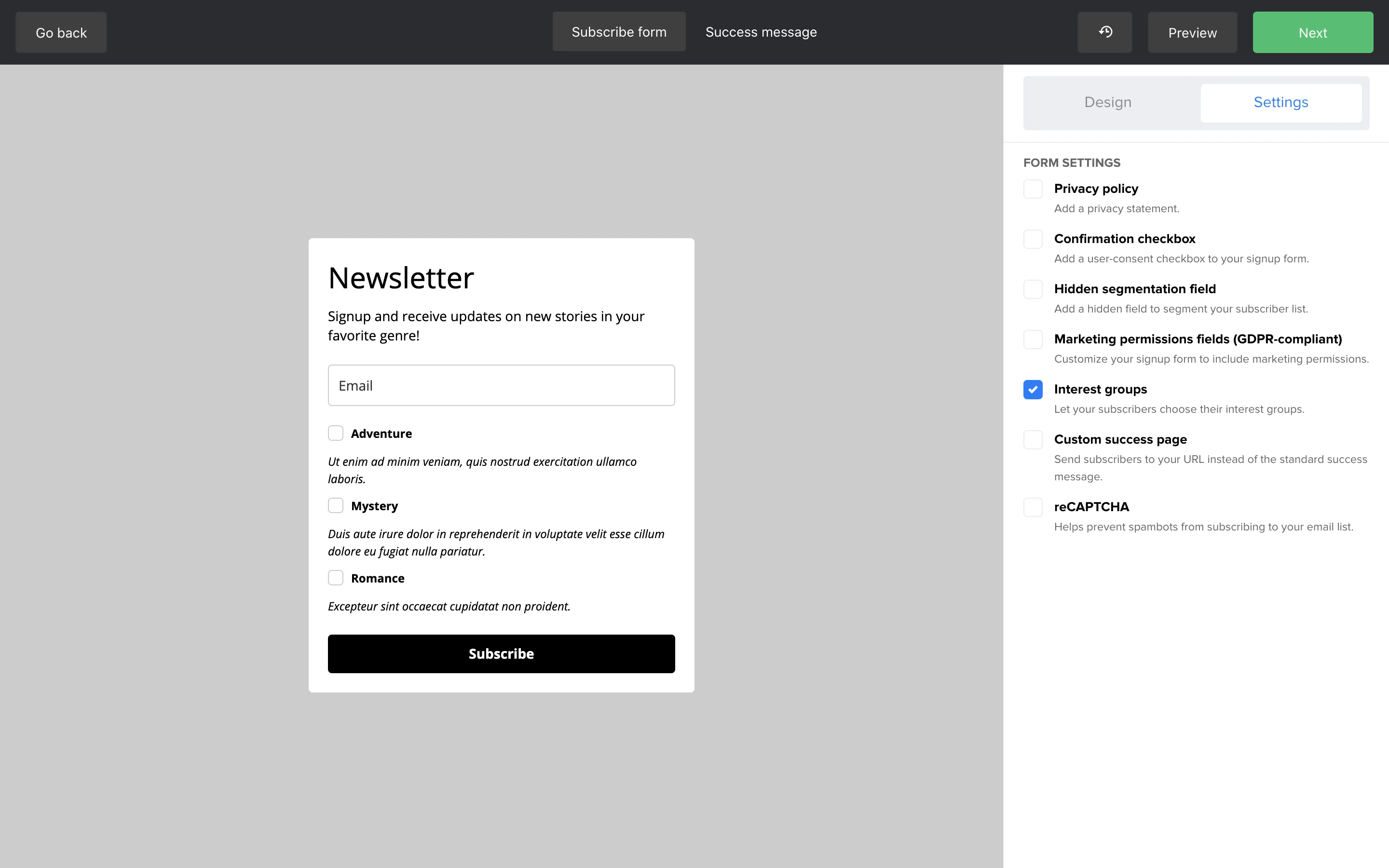
You can design your signup forms with pre-selected topics by enabling Interest groups in your form settings. Then, MailerLite will add different tags to your subscribers based on their choices. You can also activate automated email marketing campaigns to start building your relationship with each group right away.
If you want to keep your forms short and sweet, you can attach one group to the form, so everyone who signs up with that form is assigned the email tag of your choice. This will be done automatically, without subscribers needing to select the group.
4. Email tagging based on purchases
Mailerlite’s e-commerce integrations with Shopify or WooCommerce allow you to add people to groups based on the products they purchase.
For example, if a subscriber purchases a product from a specific category such as “Sportswear”, you can set up an automation to automatically add new tags to those subscribers. You can then send a targeted email message to those subscribers based on their purchase. This provides a great opportunity for cross-selling.
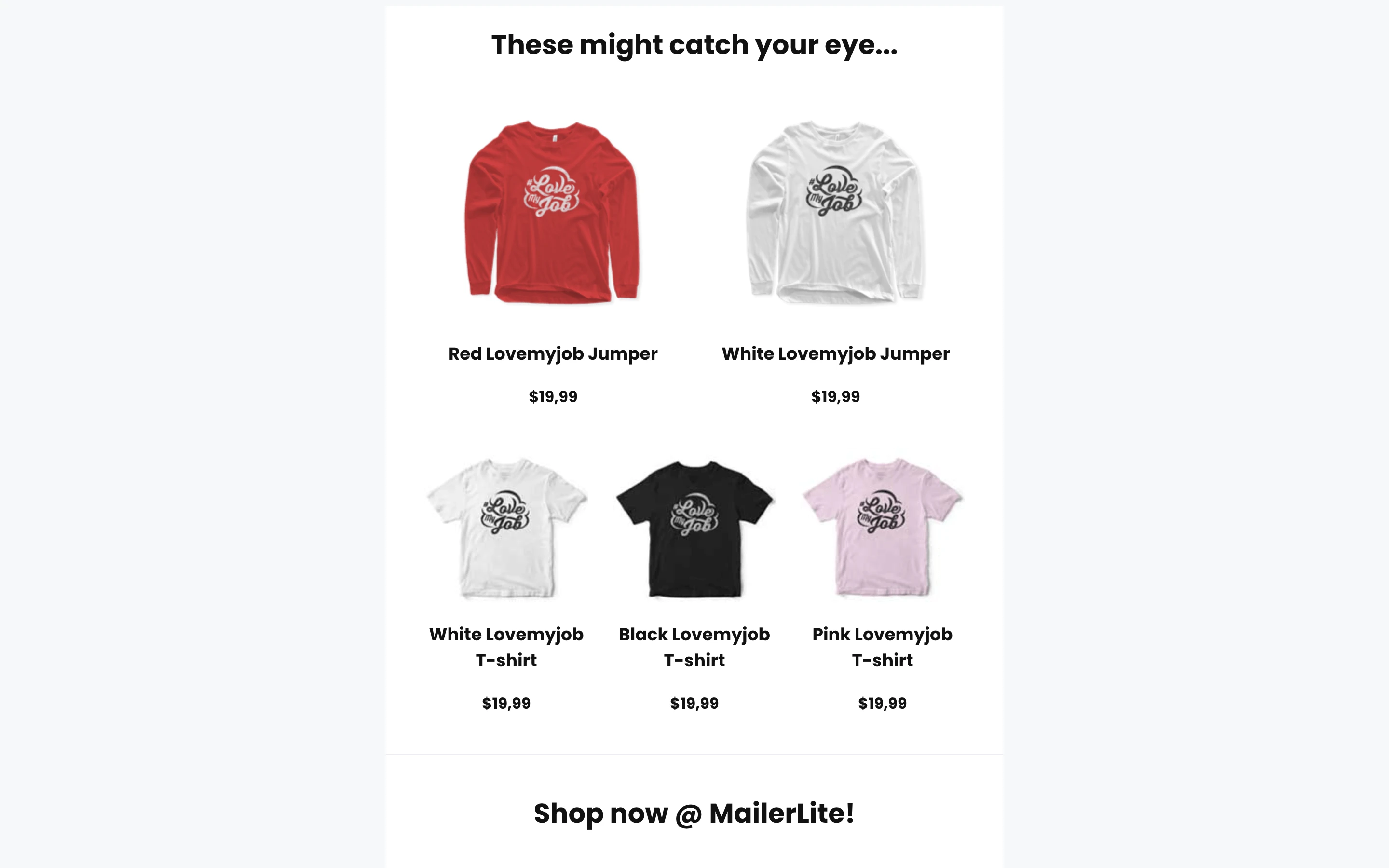
By sending emails to your subscribers entirely tailored to their interests or behaviors, not only are they more likely to engage with your content, they’ll actually look forward to opening and reading your messages.
5. Use interactive content blocks
MailerLite offers a wide range of interactive email blocks to help boost subscriber engagement. Using tags, you can move subscribers between groups based on how they interact with these blocks. Some interactive email blocks you might use include:
Survey block
Quiz block
For example you may have an existing email contact list, but want to gather some additional information about them in order to start sending more relevant content. A great way to do this is by embedding a survey in your newsletter using these simple steps:
Use the drop-down menu in the left-hand sidebar and select Surveys and quizzes.
Drag and drop the Survey block into your newsletter.
Once added, you can use the settings in the right-hand sidebar to apply rules to your survey based on how your subscribers interact with it.
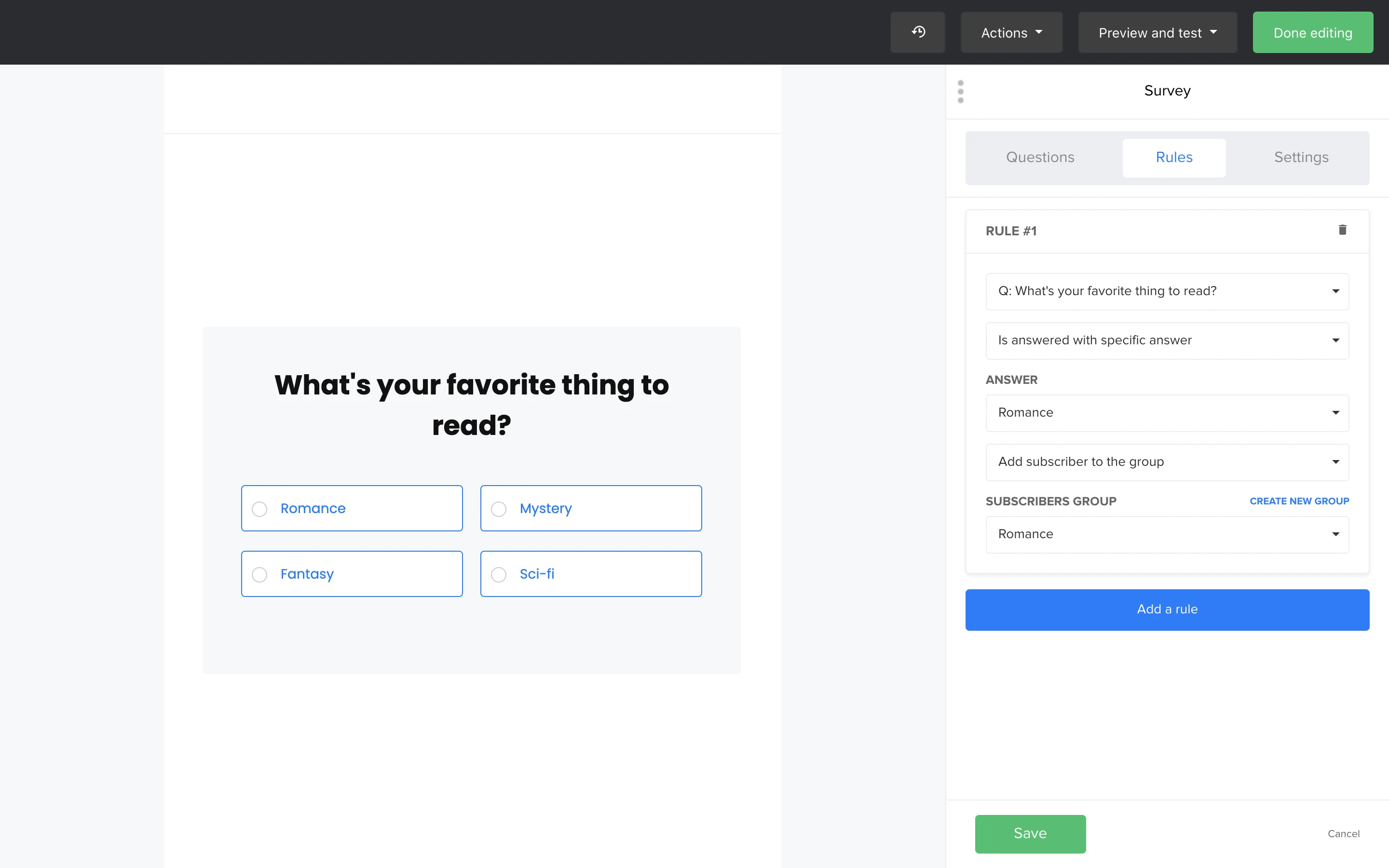
You can create a rule for each answer that adds or moves subscribers to a corresponding group. You can even create a rule that adds subscribers who don’t answer the question to a specific group.
Put your new email groups into action!
Now you’ve organized your email list into targeted groups, it’s time to put them into action! There are 2 ways to send personalized email messages to your subscriber groups: Campaigns (one-off emails) and Automation.
1. Send emails to groups
Before you schedule or send a campaign, you’ll be asked to select the campaign’s recipients. It’s here that you decide which group(s) will receive this specific email.
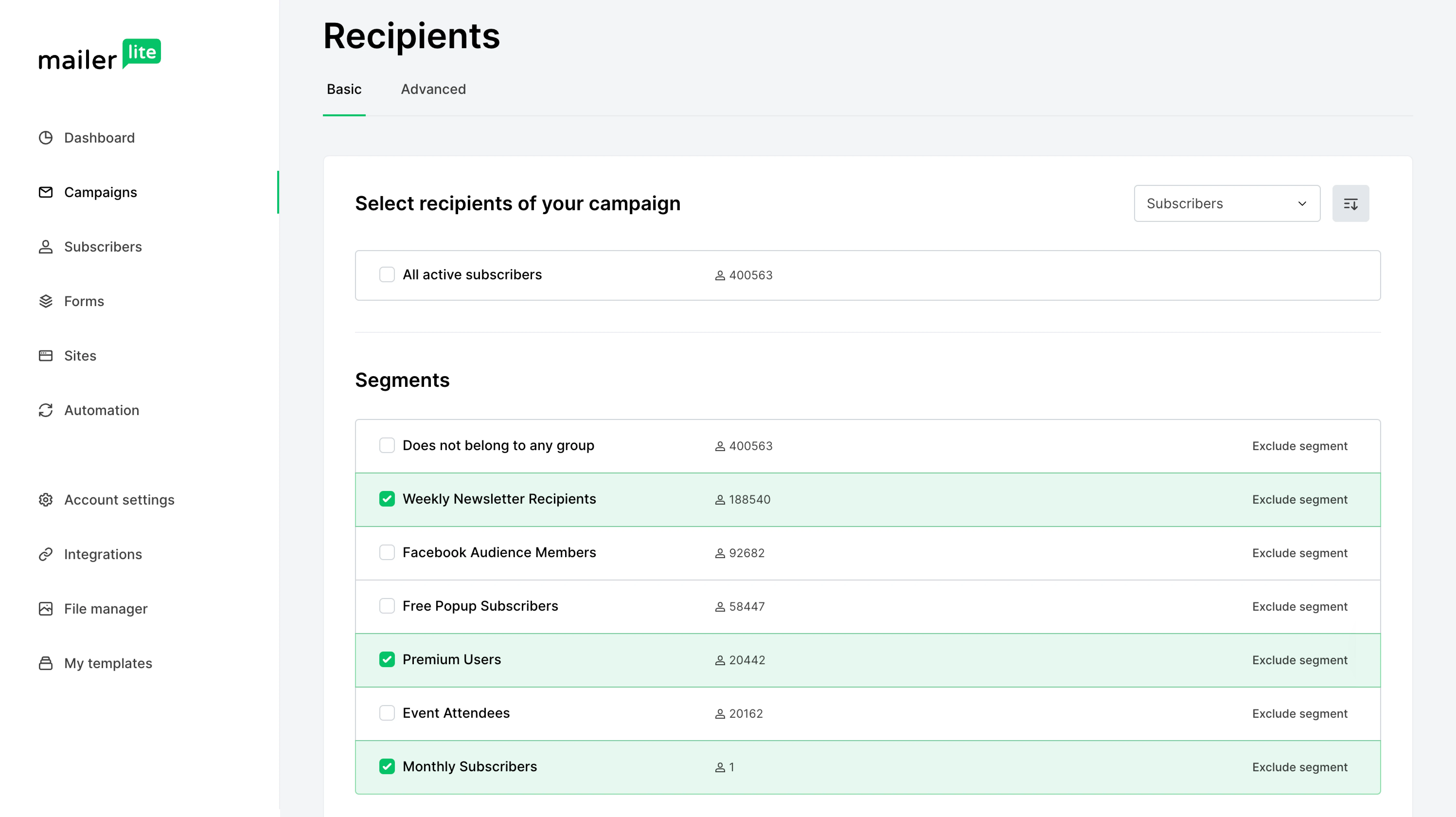
Not only can you select groups to include in this campaign, you can also select groups to exclude. If there is a specific group you don’t want to receive your campaign, you can simply select the Exclude group option. If a subscriber is both a member of an included group and an excluded group, they will be excluded from the campaign’s recipients.
2. Use groups to trigger an automation
One of the most popular triggers for an email marketing automation in MailerLite is “When a subscriber joins a group”. If you select a group as the trigger for your automation, each member of the group will travel through your workflow as soon as they’re assigned a new tag adding them to that group.
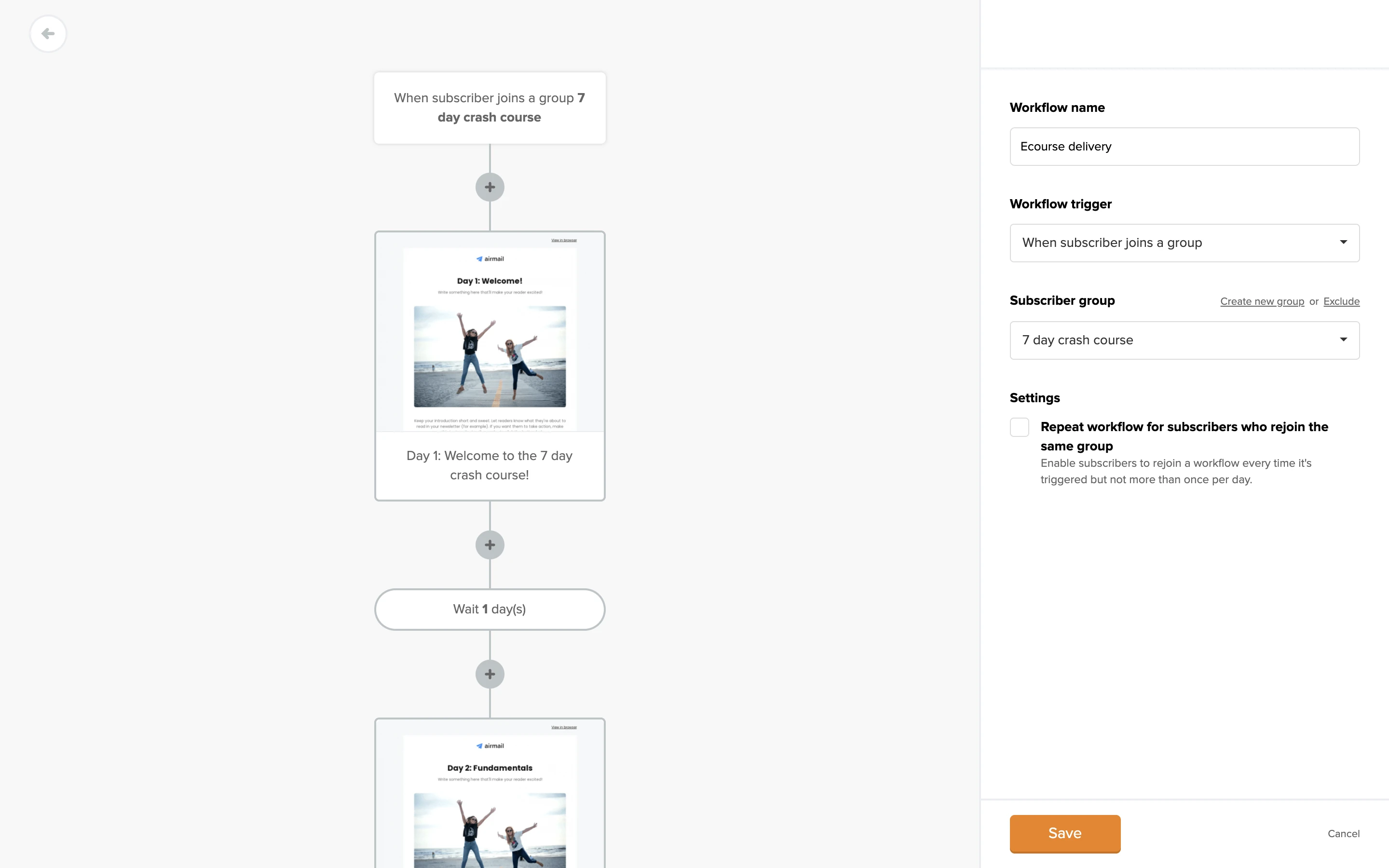
You can even opt to have your subscribers repeat the workflow every time a subscriber rejoins the same group.
For an in-depth look at automation triggers, check out this article on what automation triggers are and how to use them.
Manage your email groups using the group filter
Let's talk subscriber list management. Group filters can help you manage, sort and find your subscribers with ease.
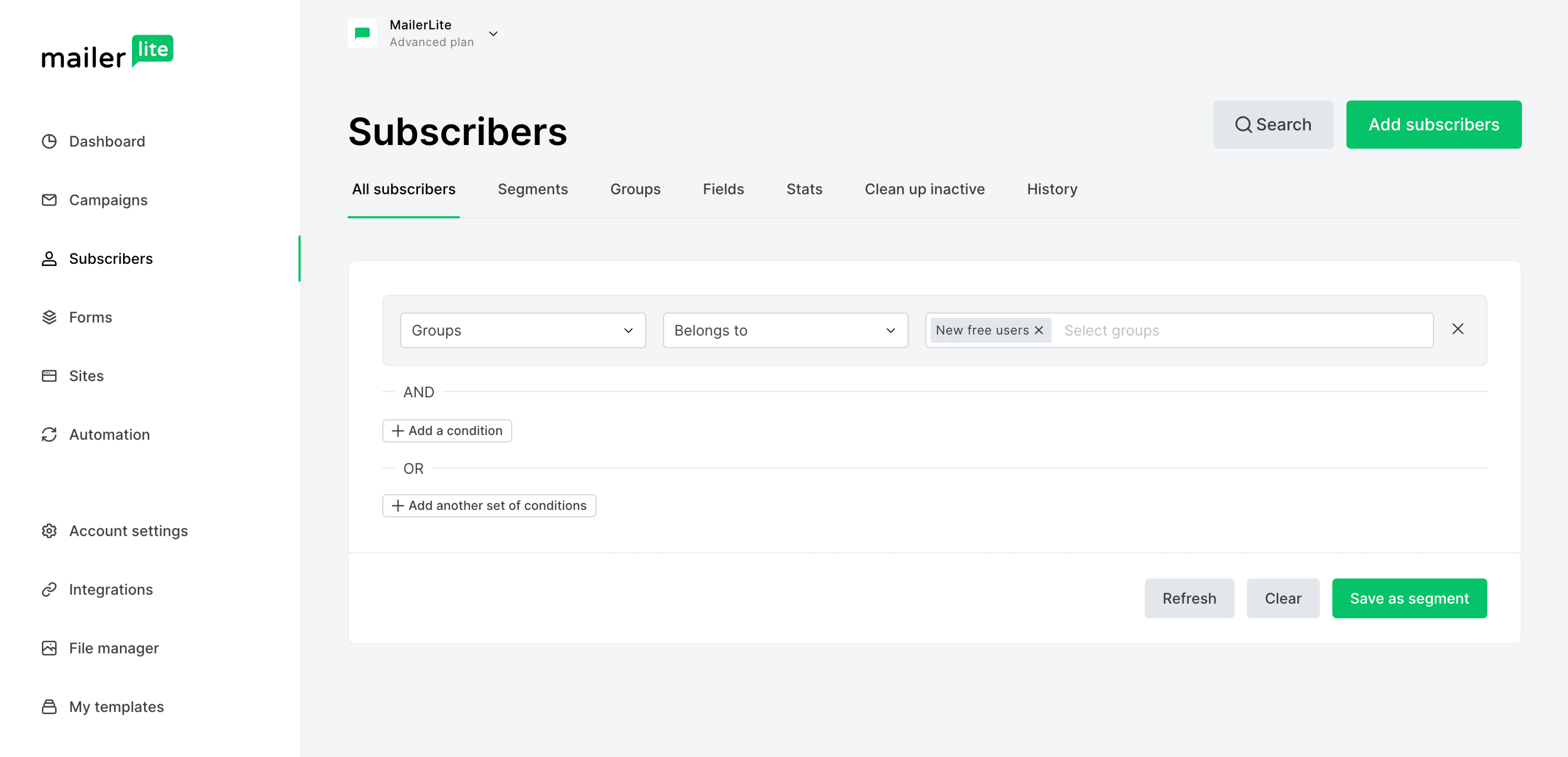
When searching through your subscribers, you can add filter conditions of groups based on:
Belongs to all
Doesn’t belong to all
Belongs to any
Doesn’t belong to any
Is not in any group
By filtering by groups, you can see how they are performing and determine if you need to revise or add new groups.
Within MailerLite’s subscriber management interface, you can filter beyond groups, such as:
Fields: Email, name and all other custom fields (equals, does not equal, contains, does not contain, is set, is not set)
Signup source (is, is not)
Signup date (is before, is after)
Time zone (is, is not)
Campaigns (was sent, was not sent, was opened, was not opened, was clicked, was not clicked)
Automation workflows (active in, not active in, has completed, has not completed)
Email inactivity (have not opened or clicked any of their last X emails)
Time inactive (have not opened or clicked an email in the last X days)
Then, with one click, you can save your filter conditions as a segment and use it for future campaigns.
What are you waiting for?
Segmenting subscribers into groups is a great way to start managing and improving your subscriber relationships. Go beyond broad email targeting and personalize your email marketing campaigns.
Use tags to highlight anything you think will make that deeper connection. Start slow by creating some standard groups, and gradually build your group structure in a way that makes sense for your business.
Editor’s note: This post was originally published on May 2017. We have updated it with new features and examples.
